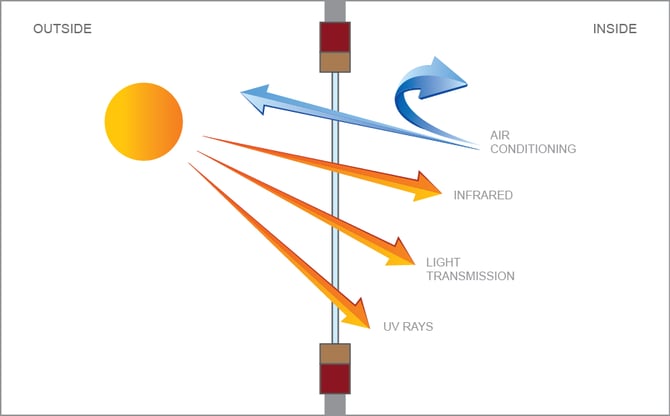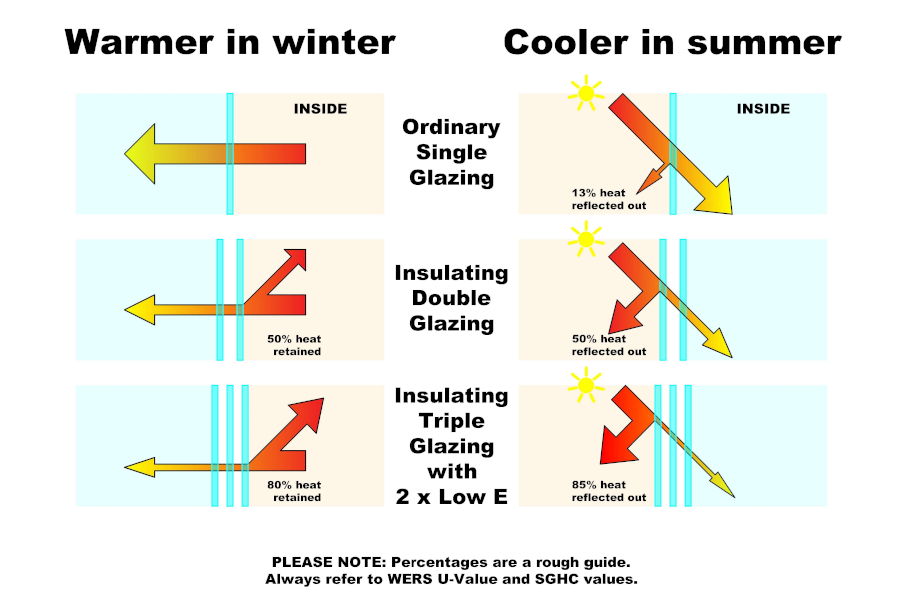All Categories
Featured
Table of Contents
Enjoy Your Summer More With Double Glazed Windows in Belmont WA
Glazing just suggests the windows in your home, consisting of both openable and fixed windows, as well as doors with glass and skylights. Glazing really simply implies the glass part, however it is usually used to describe all aspects of an assembly including glass, movies, frames and home furnishings. Taking note of all of these elements will assist you to accomplish effective passive style.

Energy-efficient glazing makes your home more comfortable and dramatically minimizes your energy costs. Unsuitable or inadequately created glazing can be a major source of undesirable heat gain in summer and considerable heat loss and condensation in winter. As much as 87% of a house's heating energy can be gained and as much as 40% lost through windows.
Double Glazing - About Windows - Window Film Excellence in Two Rocks Perth
Glazing is a significant financial investment in the quality of your house. A preliminary investment in energy-efficient windows, skylights and doors can considerably minimize your annual heating and cooling bill.

This tool compares window choices to a base level aluminium window with 3mm clear glass. Comprehending a few of the key properties of glass will help you to choose the best glazing for your home. Key residential or commercial properties of glass Source: Adapted from the Australian Window Association The amount of light that passes through the glazing is called noticeable light transmittance (VLT) or visible transmittance (VT).
Double Glazing Perth in Helena Valley Perth
This might lead you to turn on lights, which will result in greater energy expenses. Conduction is how readily a material carries out heat. This is referred to as the U value. The U worth for windows (expressed as Uw), explains the conduction of the whole window (glass and frame together). The lower the U worth, the higher a window's resistance to heat flow and the much better its insulating value.
If your house has 70m2 of glazing with aluminium frames and clear glass with a U value of 6. 2W/m2 C, on a winter season's night when it is 15C colder outside compared to inside your home, the heat loss through the windows would be: 6. 2 15 70 = 6510W That is comparable to the overall heat output of a big space gas heater or a 6.
Why Should You Have Double-glazed Windows This Summer? in Hamilton Hill WA

If you select a window with half the U value (3. 1W/m2 C) (for instance, double glazing with an argon-filled space and less-conductive frames), you can cut in half the heat loss: 3. 1 15 70 = 3255W The solar heat gain coefficient (SHGC) for windows (expressed as SHGCw) measures how easily heat from direct sunshine flows through a whole window (glass and frame together).
The lower a window's SHGC, the less solar heat it sends to your house interior. Glazing makers declare an SHGC for each window type and style. Nevertheless, the actual SHGC for windows is impacted by the angle that solar radiation strikes the glass. This is referred to as the angle of incidence.
Which Is The Best Type Of Double Glazing? - Which? - Which.co.uk in Leederville Perth
When the sun is perpendicular (at 90) to the glass, it has an angle of occurrence of 0 and the window will experience the optimum possible solar heat gain. The SHGC stated by glazing manufacturers is always computed as having a 0 angle of incidence. As the angle increases, more solar radiation is shown, and less is sent.
Table of Contents
Latest Posts
Types Of Glazing For Your Windows, Explained in Wembley Downs WA
Single Vs Double Vs Triple - Which Window Is Right For Your ... in Eden Hill WA
Why Install Stunning Double Glazing Windows During Summer? in South Guildford WA
More
Latest Posts
Types Of Glazing For Your Windows, Explained in Wembley Downs WA
Single Vs Double Vs Triple - Which Window Is Right For Your ... in Eden Hill WA
Why Install Stunning Double Glazing Windows During Summer? in South Guildford WA